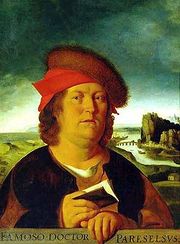Difference between revisions of "Template:This weeks featured article"
| Line 1: | Line 1: | ||
| − | == | + | ==Coastal Hydrodynamics And Transport Processes== |
[[Image:300px-Paracelsus.jpg|thumb|left|180px|Paracelsus (1493 - 1541)]] | [[Image:300px-Paracelsus.jpg|thumb|left|180px|Paracelsus (1493 - 1541)]] | ||
| − | The | + | The hydrodynamic conditions or processes, that come about from waves transforming over a coastal profile and generating wave set up and longshore currents, will result in movement and transport of the sediments (e.g. sand) present in the profile. This is referred to as littoral transport processes and is the main subject of this article. However, transport of fine sediments will also be discussed, but only very briefly. |
| − | + | ==Sediment transport in general== | |
| + | The sediment on the seabed is transported when it is exposed to large enough forces, or shear stresses, by the water movements. These movements can be caused by the current or by the wave orbital velocities or a combination of both, the latter being the most important situation. The relevant parameters for the description of the sediment transport along a shoreline or in a coastal area are therefore the following...[More|Coastal Hydrodynamics And Transport Processes]] | ||
Revision as of 17:09, 11 March 2010
Coastal Hydrodynamics And Transport Processes
The hydrodynamic conditions or processes, that come about from waves transforming over a coastal profile and generating wave set up and longshore currents, will result in movement and transport of the sediments (e.g. sand) present in the profile. This is referred to as littoral transport processes and is the main subject of this article. However, transport of fine sediments will also be discussed, but only very briefly.
Sediment transport in general
The sediment on the seabed is transported when it is exposed to large enough forces, or shear stresses, by the water movements. These movements can be caused by the current or by the wave orbital velocities or a combination of both, the latter being the most important situation. The relevant parameters for the description of the sediment transport along a shoreline or in a coastal area are therefore the following...[More|Coastal Hydrodynamics And Transport Processes]]

